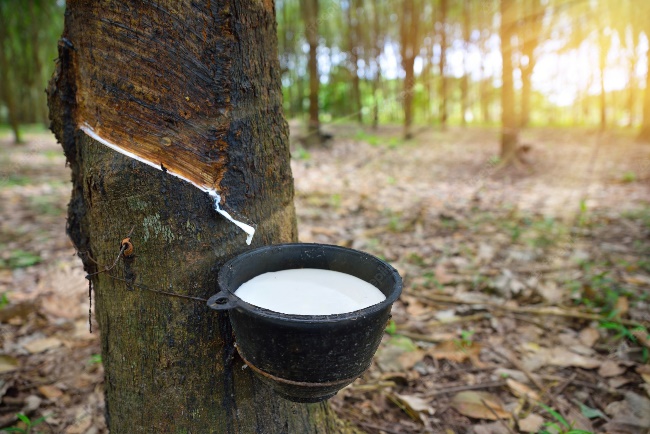Description

Disclaimer: Copyright infringement not intended.
Context
- After a moderate post-pandemic revival, the price of natural rubber has crashed to a 16-month low of ₹150 per kg (RSS grade 4) in the Indian market.
What has caused the sharp fall in prices?
- The current fall in prices is attributed primarily to a weak Chinese demand and the European energy crisis. This is along with high inflation and an import glut, among other things.
- While the unremitting zero COVID strategy in China, which consumes about 42% of the global volume, has cost the industry dearly, analysts have also flagged the acceleration of imports.
Where does India stand in terms of the production and consumption of natural rubber?
- India is currently the world’s fifth largest producer of natural rubber while it also remains the second biggest consumer of Rubber globally. About 40% of India’s total natural rubber consumption is currently met through imports.
- A latest report by the Rubber Board has projected the natural rubber production and consumption in India during 2022-23 as 8,50,000 tonnes and 12,90,000 tonnes respectively.
- The production of the material improved by 8.4%, to 7,75,000 tonnes, during 2021-22 compared to 7,15,000 tonnes in the previous year. An increase in yield, tappable area and area tapped during the year contributed to the rise in production.
- On the demand side, the domestic consumption rose by 12.9%, to 12,38,000 tonnes in 2021-22 from 10,96,410 tonnes in the previous year. The auto-tyre manufacturing sector accounted for 73.1% of the total quantity of natural rubber consumption.
- Import of the material, meanwhile, increased to 5,46,369 tonnes from 4,10,478 tonnes.

How does the falling price affect the growers?
- The turnaround has affected the small and medium scale growers tremendously, contributing to wide-spread panic in Kerala, which accounts for nearly 75% of the total production.
- The precipitous plunge in prices coupled with high costs have also left them staring at an uncertain future, forcing some to stop production for the time being.
- The impact of the price fall is felt more in the rural areas, where most people are solely dependent on rubber cultivation and have no other option but to cut expenses. This has caused a sluggishness in the respective local economies, which also coincided with the festive season in Kerala.
- If a reversal in prices seem distant, the trend may also trigger a crop switch or even a fragmentation of the rubber holdings in the long run.
Rubber
- Rubber consists of polymers of the organic compound isoprene, with minor impurities of other organic compounds.
- The main chemical constituents of rubber are elastomers, or “elastic polymers,” large chainlike molecules that can be stretched to great lengths and yet recover their original shape.
- Thailand and Indonesia are two of the leading rubber producers.
- India is the world's second-biggest consumer of natural rubber.
- Hevea brasiliensis,or rubber tree or rubber plant, is a flowering plant belonging to the spurge family Euphorbiaceae. The milky latex extracted from the tree is the primary source of natural rubber.
- brasiliensisis a tall deciduous tree.
- The tree requires a tropical or subtropical climate with a minimum of about 1,200 mm per year of rainfall,and no frost. If frost does occur, the results can be disastrous for production.
- In the wild, the tree can reach a height of up to 140 feet.
In plantations, the trees are generally smaller for two reasons:
- Trees grow more slowly when they are tapped for latex, and
- Trees are generally cut down after only 30 years, because latex production declines as trees age, and they are no longer economically productive.
- The natural rubber tree takes between seven and ten years to deliver the first harvest.
- As latex production declines with age, rubber trees are generally felled when they reach the age of 25 to 30 years.
- Originally, the South American rubber tree grew only in the Amazon rainforest.
- Early attempts were made in 1873 to grow brasilensisoutside Brazil.
- Gradually, rubber was extensively propagated in the British colonies including India.
https://epaper.thehindu.com/Home/ShareArticle?OrgId=GJ6A96K4T.1&imageview=0












